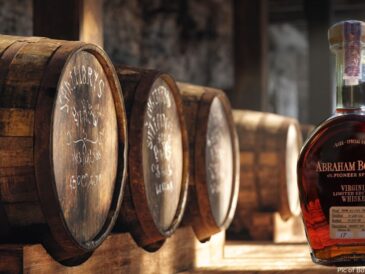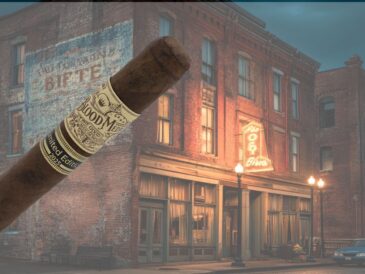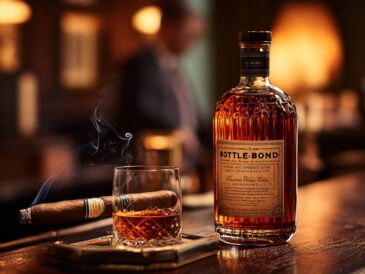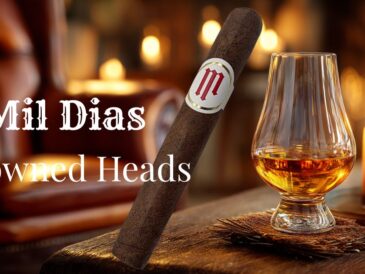Listen While You Read 🎧
Hit play on the audio and let the atmosphere guide you while diving into this beginner’s guide to pairing whiskey and cigars.
Whiskey and cigar pairings for beginners don’t have to feel intimidating — in fact, starting with the right matches makes the ritual both approachable and enjoyable. Do you pair a bourbon with a bold Maduro, or reach for a creamy Connecticut Shade cigar with a smooth Irish whiskey? The truth is, there’s no single “right” answer — but there are time-tested combinations that make an excellent starting point.
Think of pairing as a conversation between flavors: the vanilla and caramel of a Kentucky bourbon chatting with the cocoa and coffee of a dark wrapper, or the honey sweetness of an Irish whiskey balancing the soft, nutty notes of a Dominican cigar. With just a few simple rules and some approachable examples, you’ll be ready to explore this ritual without fear of being overwhelmed.
Key Takeaways ✨
-
Start simple: pair mild cigars with lighter spirits like Irish whiskey or smooth Speyside Scotch.
-
Match the strength: bold bourbons and spicy ryes shine with full-bodied Nicaraguan cigars.
-
Experiment confidently: try both complementary (sweet with sweet) and contrasting (creamy with spicy) approaches.
-
Affordability matters: you don’t need rare bottles or luxury cigars — start with accessible, budget-friendly options.
Whiskey Basics for Cigar Lovers
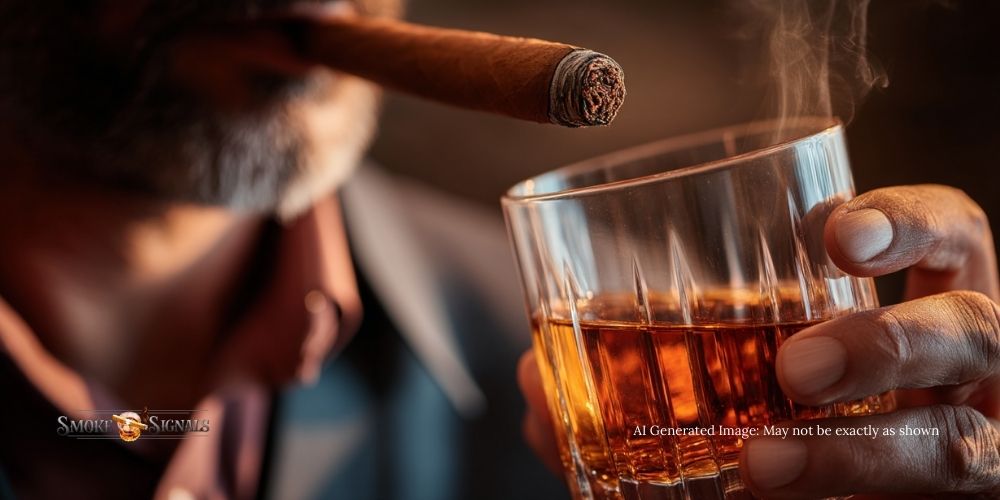
Whiskey isn’t just a drink—it’s a journey of grain, wood, and region. For cigar smokers getting into pairings, understanding the basics of whiskey styles makes it way easier to pick bottles that will blend with or contrast your cigar rather than clash.
Whiskeys vary by flavour profile, strength, and origin, all of which influence how well they pair with a cigar. Some bring sweetness and vanilla, others smoke and peat, or spice and oak. For beginners, it helps to get familiar with the major styles, what they taste like, and what kinds of cigars they tend to go with best.
Understanding Whiskey Styles
Here are a few whiskey styles beginners should know, plus what tends to come through in flavour:
-
Bourbon: An American style, must be made with at least 51% corn, distilled and aged in new charred oak barrels. Expect vanilla, caramel, honey, some oak. Barrell Bourbon+2Keg N Bottle+2
-
Rye whiskey: Sweeter and spicier, often peppery, bold—good to pair with a cigar that has a kick. New Riff+1
-
Scotch whisky (or Scotch): Produced in Scotland; includes single malt, blended, peated vs non-peated. Flavours range from light and fruity (Speyside), floral (Highlands), to strong smoke/peat (Islay). Wikipedia+2Copenhagen Distillery+2
-
Irish whiskey: Usually smoother and lighter, often triple distilled; offers soft fruit, vanilla, sometimes light spice. Great with milder cigars. White On Rice Couple+1
-
Others: Japanese whiskies, Canadian whisky, etc., which often borrow from Scotch or bourbon styles and can add interesting nuance. It’s good to explore them, especially as many are becoming more available. White On Rice Couple
Flavours to Look For
When you nose and sip a whiskey, here are the most common flavour groups and why they matter when pairing with cigars:
-
Vanilla, caramel, toffee, butterscotch
These notes usually come from corn in the mash bill (bourbon) and the impact of new oak barrels. They pair beautifully with mild cigars like Connecticut Shade, softening the smoke and creating harmony. -
Spice, pepper, baking spice
Often found in rye whiskies or bourbons with a high-rye mash bill, as well as from heavy barrel char. These flavours stand up well to Maduro or Habano cigars, balancing bold tobacco with equal intensity. -
Smoke and peat
Classic in peated Scotch whisky, especially from Islay. The earthy, smoky character mirrors the darker, earthier tones of strong Nicaraguan cigars. Just be careful — too much peat with too strong a cigar can overwhelm the palate. -
Fruit and floral notes
Found in lighter Irish whiskies and many Speyside Scotches, these hints of orchard fruit, citrus, or even flowers can brighten a pairing. They’re excellent when you want to contrast a richer, nuttier cigar. -
Oak, wood, toasted nuts
Extended barrel ageing develops oakiness, nutty flavours, and tannins. These notes work as a natural palate cleanser between cigar draws, adding structure to the experience.
Cigar Basics for Whiskey Drinkers
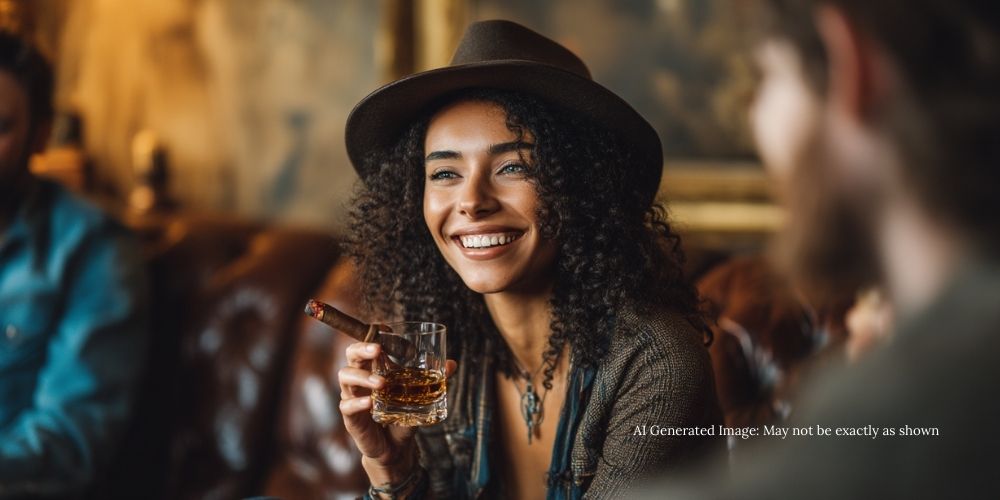
If you love whiskey but are new to cigars, it helps to understand a few fundamentals before you start pairing. Cigars vary in strength, flavour, and construction, just like whiskey does. Knowing the basics will help you choose a cigar that complements your drink instead of overpowering it.
Anatomy of a Cigar
Every cigar is made of three main parts, each influencing the flavour:
-
Wrapper: The outer leaf. This is the most essential component for flavour, often contributing 60–70% of what you taste. A silky, golden Connecticut Shade wrapper offers creaminess, while a dark Maduro wrapper delivers chocolate and coffee notes.
-
Binder: Holds the filler together. It’s less about flavour and more about structure, though some binders add subtle spice or strength.
-
Filler: The blend of tobaccos inside. Cigarmakers often combine leaves from multiple countries (Dominican Republic, Nicaragua, Honduras, Ecuador) to balance complexity, strength, and burn.
For a quick visual guide, Famous Smoke Shop has an excellent primer on cigar anatomy.
Cigar Wrappers and Flavors
Wrappers are the easiest way for beginners to predict how a cigar might taste. Here are three of the most common and beginner-friendly:
-
Connecticut Shade: Pale, golden wrapper grown in the U.S. or Ecuador. Creamy, smooth, nutty, sometimes with hints of hay or butter. Perfect with light whiskeys like Irish whiskey or a gentle Speyside Scotch.
-
Maduro: Dark, oily wrapper aged longer or fermented more deeply. Rich flavours of chocolate, espresso, molasses, and dark fruit. Best with a sweeter bourbon or a smoky Islay Scotch.
-
Habano: Reddish-brown wrapper originally from Cuba, now grown widely in Nicaragua and Ecuador. Spicy, earthy, and robust. Excellent alongside bold rye whiskey or a peaty Scotch that won’t get lost.
For more detail, Cigar Aficionado has a classic breakdown of cigar wrappers and what they mean.
💡 Pro Tip for Beginners: Start with smaller cigars like a Robusto or Corona (about 45–50 minutes of smoking). They let you experience how flavour evolves without committing to a long two-hour Churchill.
The Principles of Whiskey and Cigar Pairing
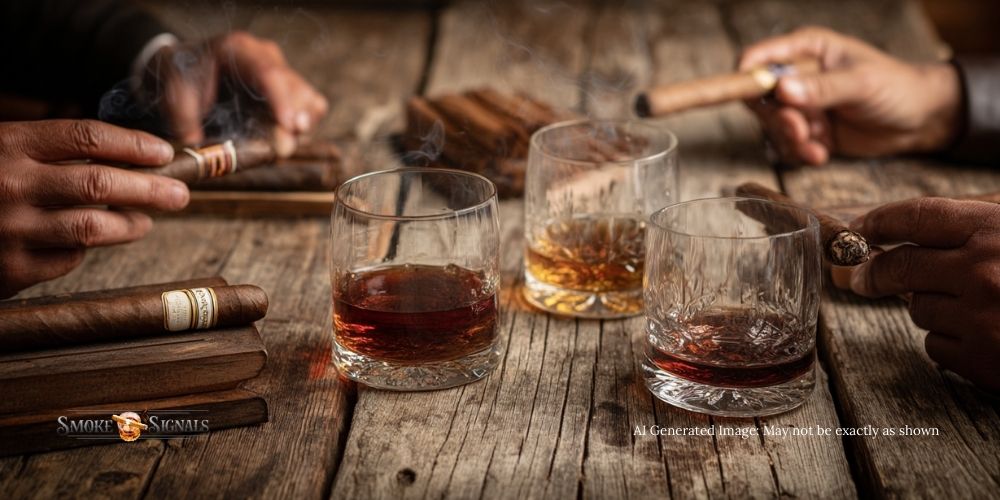
Pairing a cigar with whiskey is less about strict rules and more about balance. Just like food and wine pairings, it comes down to intensity, flavour notes, and personal preference. Understanding two simple principles will help you avoid common mistakes and discover combinations that enhance both your drink and your smoke.
Match the Strengths
One of the easiest ways to begin is by matching intensity.
-
A mild Connecticut Shade cigar goes best with smooth, lighter spirits such as Irish whiskey or a soft Speyside Scotch.
-
A medium-bodied Dominican cigar balances well with approachable bourbons like Buffalo Trace or Maker’s Mark, which carry sweetness without being too heavy.
-
A full-bodied Nicaraguan Maduro pairs best with high-proof rye whiskey or a smoky Islay Scotch, where the strength of both elements stands tall.
When you match strength, neither the whiskey nor the cigar overwhelms the other — they meet in the middle.
Complement or Contrast Flavors
Once you’re comfortable, try moving beyond strength into flavour play. Here’s how:
-
Complementary pairings: A sweet, caramel-rich bourbon with a chocolatey Maduro wrapper creates harmony. Similarly, a fruity Speyside Scotch works well with a nutty Dominican cigar.
-
Contrasting pairings: A creamy Connecticut Shade cigar against the peppery bite of a rye whiskey creates tension and excitement. Or pair a smoky Islay Scotch with a rich Maduro for a bold clash that some palates love.
There’s no right or wrong answer here — it’s about experimenting and finding out what you enjoy most.
Best Whiskey and Cigar Pairings for Beginners
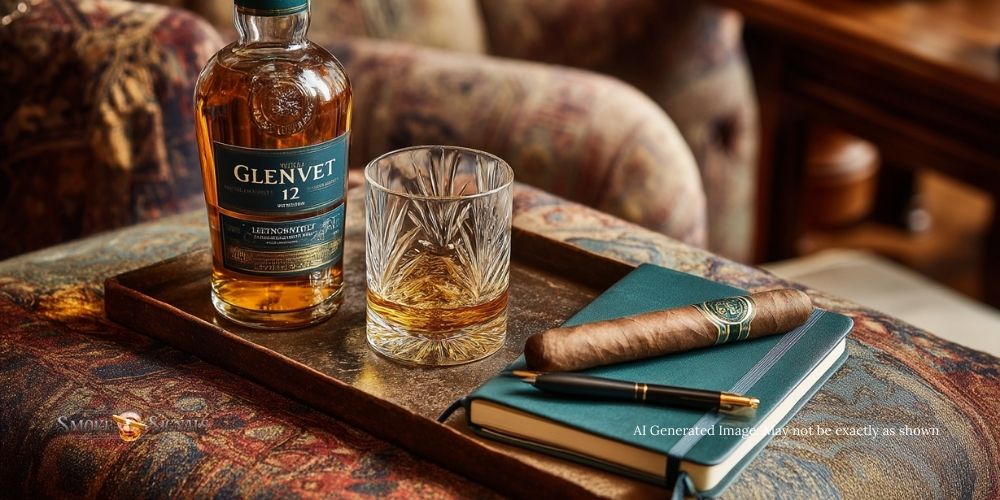
Now for the fun part: putting theory into practice. Beginners don’t need $200 bottles or ultra-rare cigars to enjoy a memorable pairing. In fact, some of the best whiskey and cigar pairings are accessible, affordable, and easy to find at most liquor shops or tobacconists. Below are four starter pairings that showcase how flavours can complement or contrast each other.
Beginner-Friendly Pairings to Try
-
Connecticut Shade Robusto + Jameson Irish Whiskey
-
Why it works: Jameson’s smooth, triple-distilled style with notes of vanilla and light fruit enhances the creamy, nutty profile of a mild Connecticut Shade cigar. Together, they create an easy-going, forgiving introduction to pairing.
-
Both are widely available and won’t break the bank. See Jameson’s official site for flavour notes.
-
-
Maduro Toro + Maker’s Mark Bourbon
-
Why it works: Maker’s Mark offers sweet caramel, vanilla, and baking spice, which pair perfectly with the dark chocolate and espresso tones of a Maduro-wrapped cigar—a natural “dessert pairing” for after dinner.
-
Maker’s Mark explains that its red winter wheat recipe is key to its soft sweetness.
-
-
Dominican Habano + Glenlivet 12 Scotch
-
Why it works: Glenlivet 12 is light, fruity, and floral, offering orchard fruit and honey notes. A medium-bodied Dominican cigar with a Habano wrapper adds spice and earth, creating a balanced, lively pairing.
-
Glenlivet details their core expressions for reference.
-
-
Nicaraguan Maduro + Buffalo Trace Bourbon
-
Why it works: Buffalo Trace is bolder, with rich vanilla, toffee, and oak. A stronger Nicaraguan Maduro offers earthy spice and dark cocoa, elevating this pairing to a higher intensity while remaining beginner-friendly.
-
Buffalo Trace Distillery provides official tasting notes.
-
Affordable and Easy-to-Find Options
One of the biggest mistakes beginners make is thinking they need premium-only pairings. You don’t. A $30–$40 bottle of whiskey and a $10–$15 cigar can deliver an exceptional experience. Start with these guidelines:
-
For bourbon, look for staples like Buffalo Trace, Four Roses Small Batch, or Maker’s Mark.
-
For Irish whiskey, Jameson or Redbreast 12 are approachable and widely available.
-
For Scotch, Glenlivet 12, Glenfiddich 12, or Highland Park 12 are good entry points.
-
For cigars, ask for Connecticut Shade (mild), Habano (medium), or Maduro (full-bodied) from trusted brands like Arturo Fuente, Romeo y Julieta, or Padron.
Remember: your palate is the ultimate judge. These pairings serve as a starting point for the journey.
Tips for Enjoying Your Pairing
Pairing a whiskey and cigar isn’t just about what you choose — it’s about how you enjoy them together. The right approach lets you notice subtle flavours, avoid palate fatigue, and elevate the ritual into something memorable.
How to Taste Like a Pro
-
Take it slow: Sip your whiskey gently and draw on your cigar without rushing. Both should last, not disappear in minutes.
-
Use the proper glass: A Glencairn or snifter helps concentrate aromas, while a simple rocks glass works fine for bourbon.
-
Try the cold draw: Before lighting your cigar, take a test puff to pick up early hints of flavour. This sets the stage for the smoke.
-
Retrohale occasionally: Push a small amount of smoke out through your nose (without inhaling) to detect hidden notes like spice, earth, or floral accents.
-
Alternate rhythm: Sip whiskey, then draw the cigar — give each its moment so they complement rather than overwhelm each other.
For a more detailed article on How to taste Whiskey Like A Pro, check this post.
Avoiding Common Beginner Mistakes
-
Don’t overpower your palate: Avoid combining high-proof whiskeys (over 110 proof) with a full-bodied cigar right away. Build up gradually.
-
Don’t smoke too fast: Puffing too quickly overheats the cigar, turning flavours bitter. A puff every 45–60 seconds is ideal.
-
Stay hydrated: Keep water nearby to refresh your palate and help balance the effects of alcohol.
-
Skip mixing too many things: For your first pairing, stick to one cigar and one whiskey, rather than switching frequently. It keeps the experience clear.
-
Mind your setting: A relaxed space with good ventilation makes a considerable difference — pairing is about atmosphere as much as flavour.
💡 Pro Tip: Keep a simple tasting journal. Write down what you notice — even if it’s just “sweet,” “spicy,” or “earthy.” Over time, your flavour vocabulary will grow and so will your confidence.

Conclusion: The First Step Into Pairing Enjoyment
Exploring whiskey and cigar pairings as a beginner isn’t about rules — it’s about curiosity. Start with approachable bottles like Jameson, Maker’s Mark, or Glenlivet, and pair them with beginner-friendly cigars such as Connecticut Shade, Maduro, or Habano. Remember to match strengths, experiment with complementary and contrasting flavours, and most importantly, enjoy the ritual at your own pace.
Every pairing teaches you something new about your palate. Some combinations will surprise you, others may not click — and that’s part of the fun. The journey matters just as much as the destination. So pour a dram, cut a cigar, and take that first step into a tradition that rewards exploration.
🎙️ Want more stories, tips, and pairings like this?
Tune into the Smoke Signals Podcast for in-depth conversations on cigars, whiskeys, and lifestyle pairings. And don’t miss a single article — subscribe to Smoke Signals on Substack to get new guides, reviews, and pairing ideas delivered straight to your inbox.
👉 Listen to the podcast
👉 Subscribe to Smoke Signals on Substack
Frequently Asked Questions
Curious about getting started with whiskey and cigar pairings? Here are some beginner-friendly answers to common questions:
What’s the best whiskey for mild cigars?
Mild cigars, especially those with a Connecticut Shade wrapper, pair best with smoother spirits like Irish whiskey or a light Speyside Scotch. The subtle flavours of vanilla, honey, and fruit won’t overpower the cigar’s creamy character.
Can I pair peated Scotch with cigars?
Yes, but it’s best with a full-bodied cigar such as a Nicaraguan Maduro. The smoky, earthy intensity of an Islay Scotch like Laphroaig or Ardbeg can overwhelm a mild cigar, so beginners should start with stronger smokes before attempting this bold match.
How much should I spend on my first whiskey and cigar pairing?
You don’t need luxury bottles or rare smokes. An affordable whiskey in the $30–$50 range and a quality cigar in the $10–$15 range are enough to create an excellent experience. Brands like Buffalo Trace, Jameson, or Glenlivet pair beautifully with accessible cigars from Romeo y Julieta or Arturo Fuente.
Do I sip whiskey or smoke the cigar first?
There’s no strict order, but many enthusiasts recommend taking a small sip of whiskey first to coat the palate, then drawing gently on the cigar. Alternate between the two, allowing time for the flavours to mingle naturally.
What’s the best scotch for cigar beginners?
A Speyside Scotch, such as Glenlivet 12 or Glenfiddich 12, is an excellent choice. These whiskies offer fruity, honeyed notes that complement medium-bodied cigars well, balancing the flavours without overwhelming the experience.
Still have questions about finding the best whiskey and cigar pairings for beginners? Drop them in the comments — your next favourite match could be just a puff and a sip away.

Bo Kauffmann is the voice behind Cigar and Whiskey Guide and Smoke Signals on Substack, where he shares expert reviews, pairings, and lifestyle insights for enthusiasts around the world. A longtime cigar lover and bourbon explorer, Bo blends storytelling with deep knowledge to help readers savor every pour and every puff.



